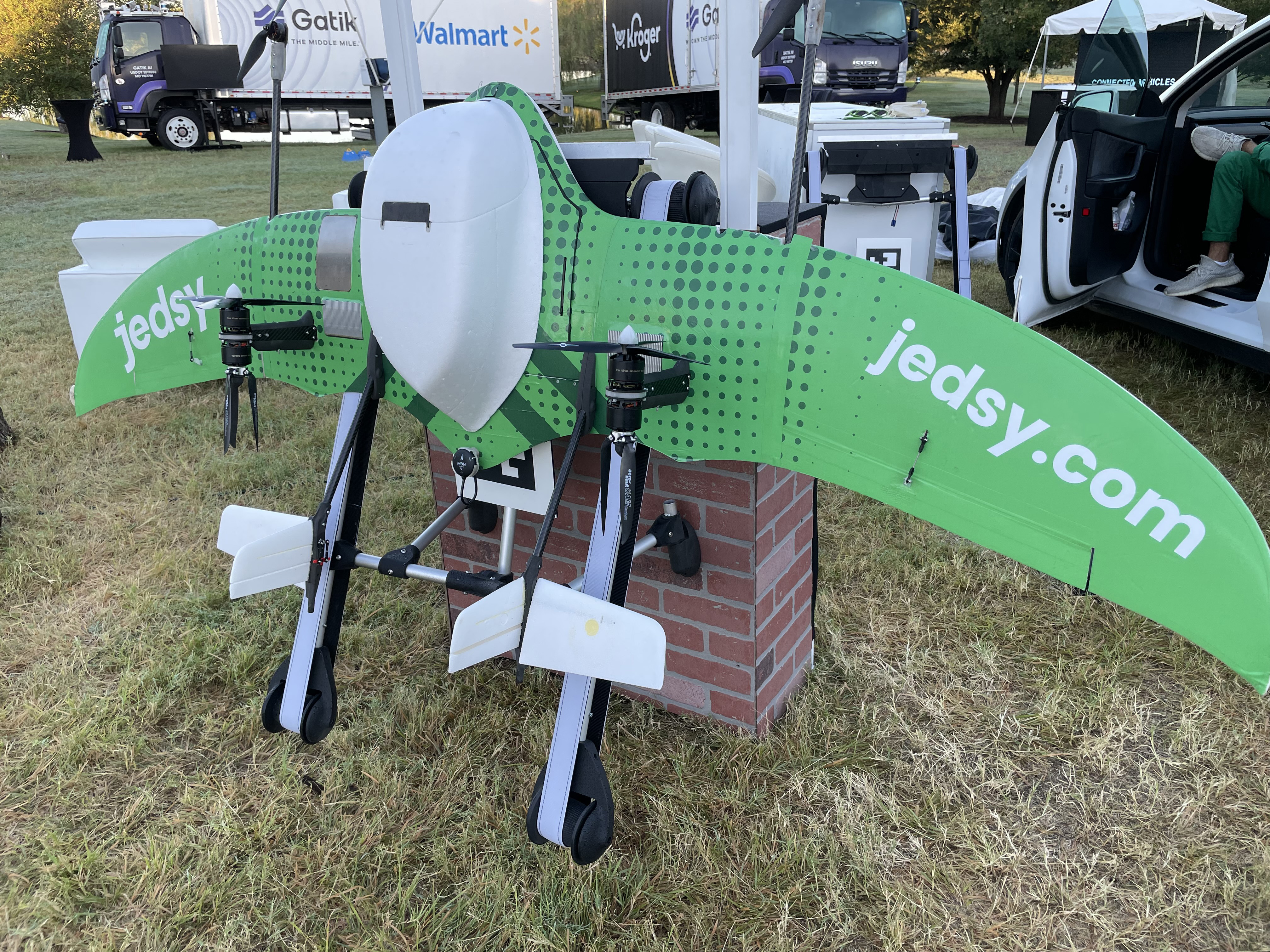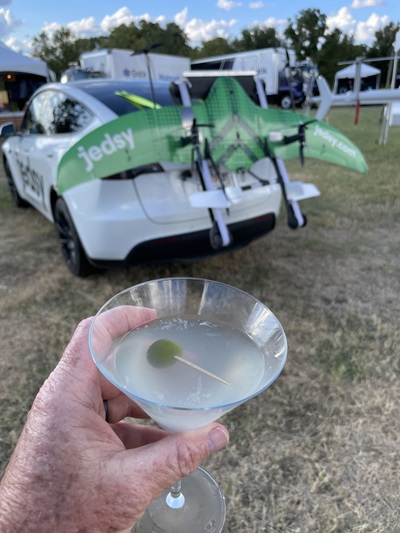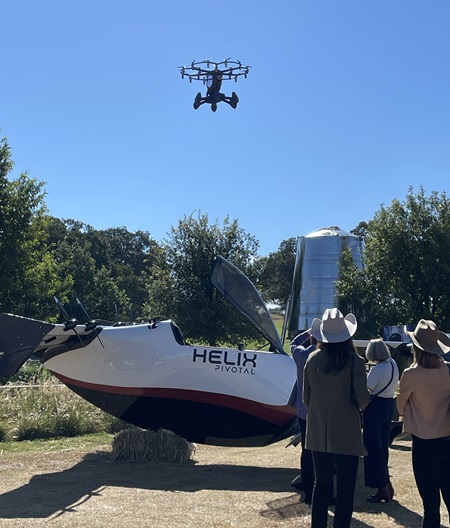Putting George on steroids
UP.Summit showcases ways to increase GA safety
Improving general aviation safety was among the themes at this year’s UP.Summit, the annual invitation-only conference that brings together entrepreneurs, investors, and visionaries looking to improve mobility across all lines of business.

Conducted on the expansive Circle T Ranch belonging to billionaire Ross Perot, Jr., just outside Dallas, the summit showcased a cavalcade of emerging aviation products, including drones, piloted and unpiloted electric aircraft, hydrofoils, hypersonic vehicles, and even electric semitrucks. The 200-plus attendees also heard from various political and business leaders, including former President George W. Bush, former British Prime Minister Boris Johnson, former and current Arkansas governors and current presidential candidates Asa Hutchinson and Sarah Huckabee Sanders, and Texas Gov. Greg Abbott.
Mark Groden, founder of Skyryse, used his time on stage to make the case that GA can be made safer through the use of more modern and automated flight control systems. A person is 38 times more likely to have a GA accident than an airliner accident, he said. Those odds can be dramatically improved through a fly-by-wire system that Groden says is possible to implement even in existing GA airplanes. “An STC has been applied for,” he said. Skyryse’s triple-redundant system will be certified to FAR Part 25 levels of reliability—the same level required for airliners. The goal, he said, was to bring a common level of technology and safety to GA. The company’s “easy and intuitive integrated flight control system” removes many aircraft management complexities during standard flight operations, inclement weather, and emergencies. Skyryse has raised over $260 million to complete the project.
During the summit, Skyryse announced that it has taken delivery of an Airbus H130 helicopter from Air Methods for installation of the integrated flight control system. The delivery is the next step in Skyryse’s FAA certification program. Eventually, Air Methods, which is an investor in the startup, plans to include the system in its fleet of 400 rotorcraft and fixed-wing aircraft. According to a press release, “Skyryse’s technology will provide Air Methods pilots with enhanced situational awareness, streamlined flight control, and automated features to reduce overall workload. Together, Skyryse and Air Methods will pioneer safer and more efficient life-saving air medical services.”
Also at UP.Summit, Robert Rose, CEO of Reliable Robotics, discussed his company’s efforts to bring higher levels of automation to GA in an effort to improve safety. The company’s “always on autopilot” can manage the aircraft through takeoff, landing, and taxiing. “Unmanned can be done,” he assured, although the system can also be used in conjunction with a pilot. Reliable Robotics has been demonstrating and testing the system in a Cessna Caravan and this summer deployed it into the complex Southern California airspace system in a test with the FAA. While a pilot was on board to monitor the flight, the aircraft was remotely controlled. The FAA approved its type certification plan in July. During the summit, the company announced that it has made significant strides demonstrating to the U.S. Air Force that Reliable Robotics systems can be used to control larger military aircraft as well. “Remotely operating large multi-engine Air Force jets like the KC-135 Stratotanker will enable higher aircraft utilization, more frequent deployment and almost continuous operation to fly further distances unimpeded by crew repositioning logistics,” Rose explained.
Autonomy was often discussed at the summit. Adam Woodworth of drone delivery company Wing noted that the company has been demonstrating its system’s capabilities at sites across the country. The company has created a “path to 100 million deliveries,” which the company believes is necessary to ensure the viability of drone deliveries of all types. While Wing’s current system is designed to deliver small quantities of products to individuals, future types of drones will allow for delivery of larger packages to many types of locations.
Zipline, which has been in the drone delivery business for a number of years, showed off its next generation drone, a larger quadcopter that lowers a package container to the ground on a tether. Once on the ground, doors on the bottom open to drop off the package. An electric fan on the container stabilizes it during the descent and ascent as the drone hovers above. The new system requires less of a clear landing zone than the current system, which drops packages via a parachute and requires a 40-square-foot clear area.

Swiss-designed Jedsy demonstrated its delivery drone during the summit and announced that it has signed a multimillion-dollar contract with Asklepios Healthcare, Germany’s largest hospital system. The current version of Jedsy is optimized for moving blood and other samples as well as medications between hospitals and laboratories, according to company founder Herbert Weirather. The 24-pound drone utilizes two rotor motors for vertical lift and four push/pull motors for cruise and maneuvering. It is designed to dock on a windowsill or railing where it can charge while awaiting a package to be inserted. It then flies at up to 78 knots to its hospital or lab destination, docking again and recharging. Somewhat like how a bat maneuvers to its roost, the Jedsy drone cruises horizontally until just before the dock when it switches to a vertical mode and docks nose up. The drone can fly up to 62 miles and in maximum continuous winds of 25 knots and gusts up to 30 knots.
To demonstrate the capabilities of the drone, Weirather created a “drone cocktail” by taping a cocktail shaker to the drone and then launching it for a series of aerobatic maneuvers over the crowd. Once it landed, he shared the thoroughly shaken cocktail with the crowd.
For those individuals who want to personally shake their cocktails, there’s always Lift; Jetson; and Pivotal, formerly known as Opener.
With its new name, announced at the summit, Pivotal flew two of its personal electric aircraft at the same time for the audience. The current preproduction version of the original BlackFly personal eVTOL weighs 348 pounds and carries a 200-pound pilot, keeping it in the FAR Part 103 ultralight category, even with a slight increase in weight from the 313-pound prototype previously unveiled. Two dozen of the aircraft have been built and flown, with some already in the hands of 20 operators. The vehicle, which is technically an amphibious aircraft, has fore and aft wings with four motors on each wing, each powered by its own battery pack. The fly-by-wire system is controlled by one of the two joysticks in the cockpit—designed so the pilot can choose whether to fly it with her left or right hand and to provide redundancy. The aircraft can take off and land vertically, or with some headwind, can make a rolling takeoff in less than 100 feet, which uses less energy. All in all, the aircraft can fly for about 20 minutes—meant to be a fun and easy-to-fly experience. While it can fly with as many as two motors shut down, it also carries a ballistic parachute to lower the entire aircraft to the ground if needed.
Pilot training takes about two weeks, according to company president Ken Karklin, who flew one of the aircraft during the event. Because it is an ultralight, no pilot certificate is required. The production version will be called Helix. It will be slightly larger and will be able to carry slightly more, he said. Orders can be placed on the company website starting January 9, with first deliveries scheduled for June 10, for a price of $190,000.
A larger version, Helix Gen 5, will have 12 motors and will weigh about 1,000 pounds, with enough room for a small hybrid engine to extend range and to allow for more complex missions, such as early-onset firefighting and light cargo transport.
Jetson also flew its personal aircraft at the show. Looking somewhat like an aerial personal watercraft, the Jetson is basically an aluminum roll cage with a seat, joystick, eight motors, and a ballistic parachute. It too can fly for about 20 minutes at speeds of about 55 knots and is considered an ultralight. Designed and built in Italy, it is available for $98,000, including a $10,000 down payment, with deliveries of production models expected in 2024. At the summit, the company announced $15 million in funding from a variety of investors.

Lift Aircraft flew its Hexa personal eVTOL aircraft during the summit. Production versions of the 18-motor, single-person aircraft are expected by the end of 2023.
While Hexa is meant for personal flying, Rain introduced a product that is all business—the business of snuffing out forest fires before they become uncontrollable. At UP.Summit, Rain announced a partnership with Sikorsky. Rain’s software system for optimizing flight paths to the incipient fires and delivering retardant immediately will be paired with Sikorsky’s autonomous flight control system under development for the Black Hawk to provide a rapid response system to fires.
“Combining Sikorsky’s demonstrated mature vehicle autonomy system with Rain’s early response capability will show how an uncrewed BLACK HAWK or FIREHAWK helicopter can quickly take off, fly to a suspected ignition, and drop water to suppress a wildfire in its incipient stage with no human onboard,” said Rain CEO Maxwell Brodie.
Rain highlighted a study published in August that expressed the value of time saved fighting fires in economic terms, showing that a 15-minute reduction in wildfire response times could prevent up to $8.2 billion in losses annually within the state of California alone. Brodie said a fleet of relatively small Rain-enabled firefighting aircraft could immediately attack fires when they are as small as one tree ablaze, quickly preventing fire spread.
This year’s Dallas event was the sixth UP.Summit, which was founded in part by entrepreneurs Cyrus Sigari and Ben Marcus. With other investors they in 2021 formed UP.Partners, a venture capital fund to invest in mobility projects. The group at UP.Summit 2022 announced the creation of UP.Labs, which not only invests in young mobility companies, but helps nurture them.



